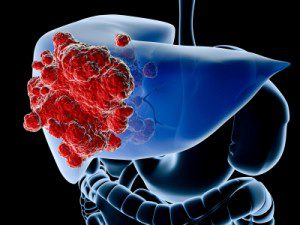By John Phillip
Guest Writer for Wake Up World
Mortality from diseases of the liver have increased over the past half-century to secure a place as one of the top leading causes of death each year in the United States. One hundred years ago, liver disease was virtually unheard of except for the occasional death from alcoholic cirrhosis. Today, non-alcoholic fatty liver disease (NAFLD) is a common diagnosis caused by an inability to effectively clear fat stores from the organ. Metabolic function quickly becomes compromised and liver failure can be a potentially fatal result.
The skyrocketing rise in the number of overweight and obese individuals is a significant contributing factor to the epidemic of deaths recorded from liver disease. Prior research bodies have implicated increased use of fructose, and its super-charged twin, high fructose corn syrup (HFCS) with weight gain and NAFLD. Fructose consumption in the U.S. has more than doubled in the past 30 years and is found in fruits and vegetables, whereas HFCS is a mixture of glucose and fructose that is used as a sweetener in many processed consumer food products including bread, cereal, and soda.
[pro_ad_display_adzone id=”110028″]
Excess Fructose Consumption Can Compromise Liver Function Leading to Organ Failure
Research published in the journal of the American Association for the Study of Liver Diseases, Hepatology, found that obese patients with type 2 diabetes who consume higher amounts of fructose display reduced levels of liver adenosine triphosphate (ATP), a compound involved in energy transfer between cells. The scientists determined that elevated uric acid levels are associated with more severe hepatic ATP depletion as fructose consumption is increased.
To conduct the study, researchers evaluated 244 obese and diabetic adults from the Look AHEAD Study, with dietary fructose consumption estimated by a food frequency questionnaire. The scientists assessed changes in liver ATP content using an IV-delivered fructose challenge, and then compared patients with low fructose consumption (less than 15 grams per day) to those with high fructose consumption (greater than 15 grams per day).
Minimize Daily Fructose Consumption and Avoid HFCS to Promote Liver Health
The researchers determined that participants with the highest intake of dietary fructose had lower liver ATP levels and a greater change in ATP content following the fructose challenge as compared to those who consumed a lower amount of fructose. Patients with high uric acid levels displayed lower ATP stores in response to fructose. This means that fructose consumption is directly correlated to metabolic liver function and is a significant determinant in how well the liver performs its more than 300 critical functions necessary to sustain life.
The study team concluded “High fructose consumption and elevated levels of uric acid are associated with more severe depletion of liver ATP. Our findings suggest that increased dietary fructose intake may impair liver “energy balance.” This study reinforces the wealth of scientifically validated research to avoid excess fructose consumption from sweetened beverages and processed foods to avoid weight gain and risk of NAFLD and liver failure.
Article sources:
- http://onlinelibrary.wiley.com/doi/10.1002/hep.25741/abstract
- http://www.medpagetoday.com/Cardiology/Diabetes/34864
- http://www.sciencedaily.com/releases/2012/09/120913104121
Related reading:
About the author:
John Phillip is a Certified Nutritional Consultant and diet, health and nutrition researcher and author with a passion for understanding weight loss challenges and encouraging health modification through natural diet, lifestyle and targeted supplementation. John’s passion is to research and write about the cutting edge alternative health technologies that affect our lives.
Discover the latest alternative health news concerning diabetes, heart disease, cancer, dementia and weight loss at My Optimal Health Resource.
This article was republished with permission from Live in the Now, one of the fastest growing natural health newsletters. Visit LiveInTheNow.com to browse their complete library of articles, or join nearly 60,000 other readers who have subscribed to their Newsletter.
[pro_ad_display_adzone id=”110027″]







